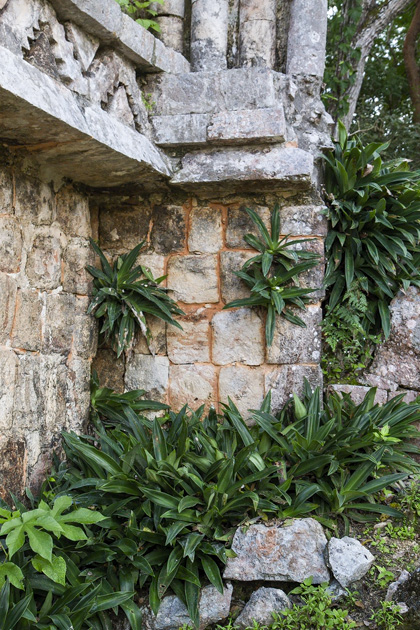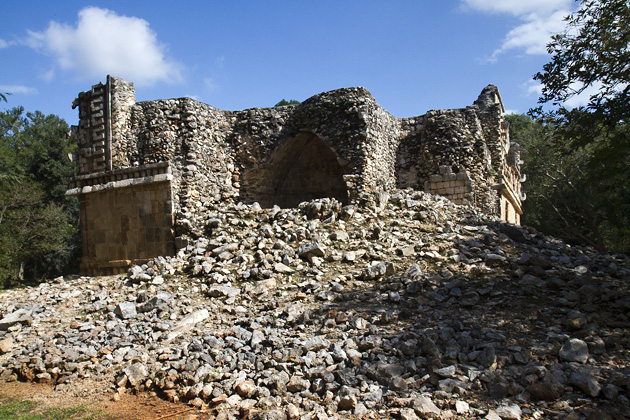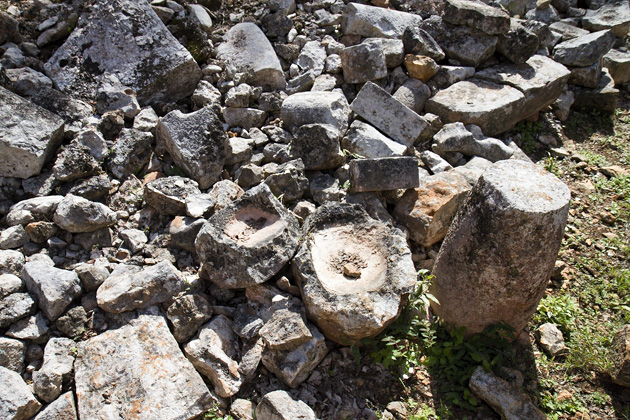The Ruins of Labná and Xlapak
Down the road from the Grutas de Lóltun is the archaeological zone of Labná, the first of five ancient Maya sites we’d be visiting on our trip through the Puuc Valley. Nearby we’d find Xlapak, a much smaller site whose name means “Old Walls”.

The compact site of Labná was a great place to introduce ourselves to the Puuc-era Maya. Occupying a relatively small area, we didn’t have to walk far from the extraordinary palace, counting 67 rooms and seven patios, to the Labná Arch, which served as the subject for one of Frederick Catherwood’s most famous drawings. Both the palace and the arch have managed to retain much of their detail, with latticed geometrical figures and repeating sculptures of the rain god Chaac.
The limestone ground of the Yucatan Peninsula quickly absorbs water, which means no rivers run along the surface of the land. Drinking water is scarce, and the Maya had to learn how to collect rain in reservoirs called chaltunes. If the rains held off, the chaltunes ran dry. And if the chaltunes ran dry, death was not far off. So it’s no surprise to find the rain god so honored in the temples of the Yucatán.

A few minutes drive from Labná is the site of Xlapak. Despite being directly off the road, free to visit, and rather impressive, almost nobody stops here. So the site enjoys a more atmospheric sense of abandonment. The main draws are a couple of palaces with intricately decorated cornices, again prominently featuring Chaac.
Locations on our Map: Labná | Xlapak
–Our Favorite Car Rental Place In The Yucatan




























<!– div.centerimg { margin-top:10px; } –>




Pingback: The Eco-Museum of Cacao | For 91 Days in the Yucatán – Travel Blog
Pingback: Sayil | For 91 Days in the Yucatán – Travel Blog